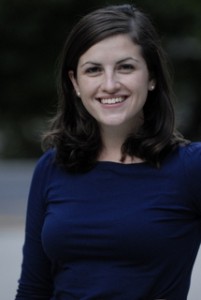We all know that M&M is named for (Howard) McClintic and (Charles) Marshall, class of 1888, whose construction company built the Golden Gate Bridge, George Washington Bridge, Waldorf Astoria and Panama Canal.
But do you know who Mr. Dravo was? What impact did Carothers leave on Lehigh? And what did Richards do while at Lehigh?
Lehigh students take great pride in the residence hall they lived in during their first year, but with the exception of M&M, little is known about the people for whom these buildings are named.
I decided to delve into what impact these people had on Lehigh.
Let’s begin at the lowest residence hall on the hill — Lower Cents.
The buildings in Lower Cents are named for Neil Carothers, Bradley Stoughton and Phillip Mason Palmer.
Stoughton, Palmer and Carothers all served as deans of Metallurgical Engineering, Arts and Sciences and Business Administration, respectively.
The buildings in Upper Cents were also named for men who worked at Lehigh around the same time period, but these men were at Lehigh earlier than those of Lower Cents — they were of the era of the late 1800s and early 1900s.
Wray H. Congdon served in many positions at Lehigh, including director of admissions, dean of students and dean of the graduate school. He also did educational work in West Germany. Congdon was involved in the local community as a member of the Bach Choir and administrative director of Historic Bethlehem, Inc.
Natt Morrill Emery came to Lehigh in 1896 as an assistant in English and served in many roles at Lehigh. He was vice president, comptroller, head of the business office and assistant to the president. He was at Lehigh for almost forty years and in the local community, served as director of St. Luke’s Hospital and was a member of the Bethlehem School Board.
John Leavitt was the second president of Lehigh and was in the position from 1875-79. While his tenure was short, the Episcopalian minister accomplished many things, including changing the name of the colleges and overseeing the completion of Linderman Library. He also was a professor of psychology and Christian evidences while president.
Charles Maxwell McConn was a personal friend of President Richards’ and came to Lehigh in 1923 to serve in the newly created dean position. In this position, he oversaw admissions, registration and student records. He also created the probation system, which included social probation for fraternities
Kenneth Smiley was a member of the faculty and staff for 33 years and served as vice president, director of admissions and secretary of the Board of Trustees. He received his master of arts at Lehigh.
Dr. Charles Thornburg was a math professor at Lehigh and served as chair of the department from 1895-1923. He was secretary of the faculty, a position that dealt with student administration, and was involved with athletics and was a “pioneer in the development of intercollegiate competition at Lehigh,” as per a September 1965 The Brown and White article.
Moving up the hill to Richards House, it is named for Charles Russ Richards, who was president of Lehigh from 1922-35.
Dravo House was built in 1948 and honors the Dravo brothers, Francis and Ralph, who were part of the Lehigh class of 1887 and 1889. They were head of the Dravo Construction Corporation and friends of Henry Drinker, the fifth president of Lehigh. Francis was president of the Alumni Association and was an alumnus trustee. He passed away when his train in Pittsburgh derailed.
Finally, for a little lesser known information about M&M — McClintic and Marshall were founding brothers of Sigma Nu; Marshall was a member of Tau Beta Pi, the engineering honors society; and McClintic played first baseman for the baseball team.
They founded the McClintic-Marshall Construction Company in Pottstown, Penn., in 1900. It became the largest independent steel company in the country by 1930 and was bought by the local Bethlehem Steel for $32 million the next year.
Also, Marshall donated his house in Pittsburgh to the city and it now operates as the Pittsburgh Center for the Arts.
So the next time you return to your dorm, think about the person your building honors.






Comment policy
Comments posted to The Brown and White website are reviewed by a moderator before being approved. Incendiary speech or harassing language, including comments targeted at individuals, may be deemed unacceptable and not published. Spam and other soliciting will also be declined.
The Brown and White also reserves the right to not publish entirely anonymous comments.